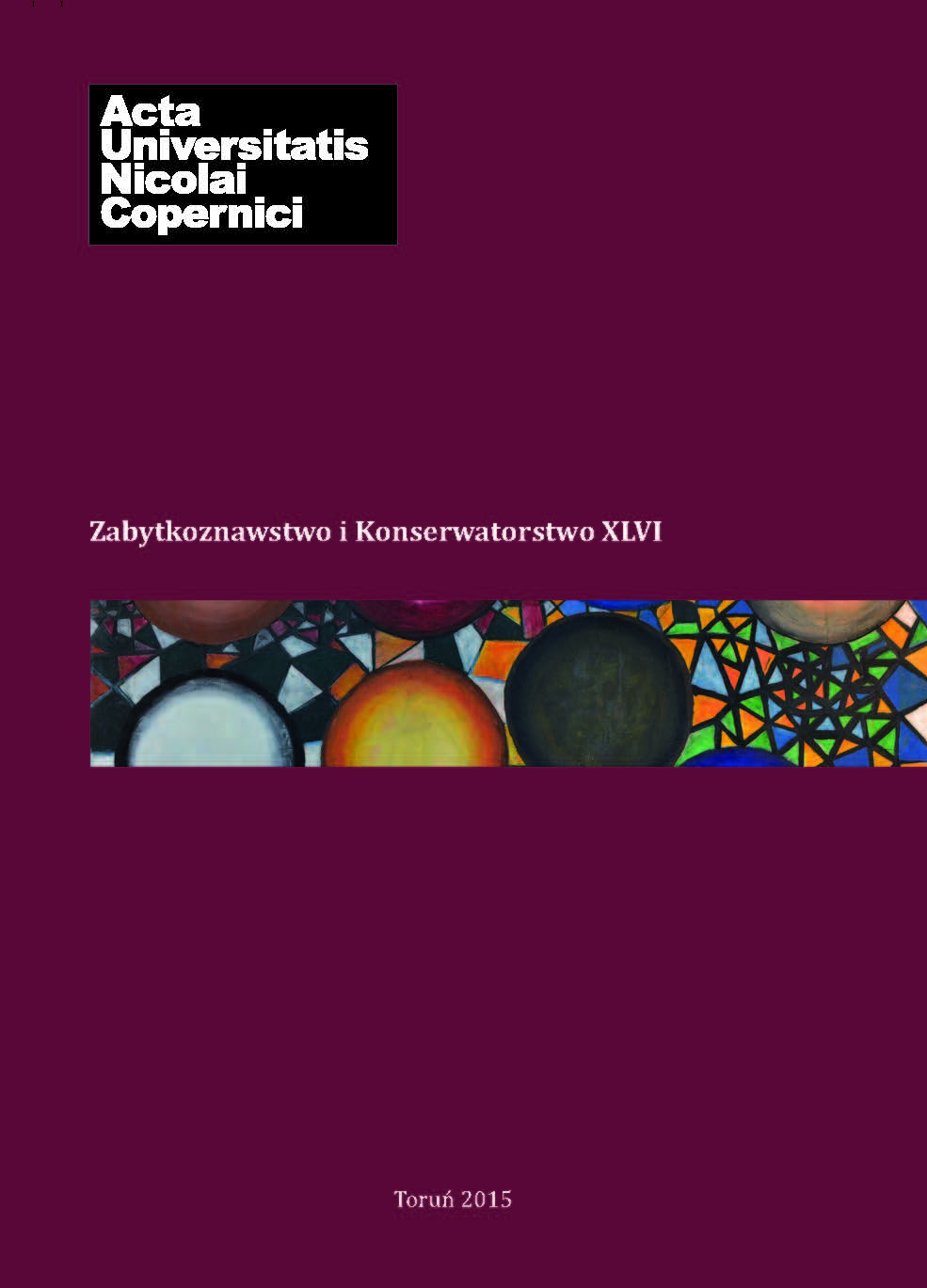Statuty zakonu krzyżackiego ze zbiorów Biblioteki Uniwersyteckiej w Toruniu – przyczynek do badań nad sztuką w kręgu zakonu krzyżackiego w Prusach
DOI:
https://doi.org/10.12775/AUNC_ZiK.2015.004Abstrakt
The manuscript of the Statutes of the Teutonic Knights preserved in the University Library in Torun (Rps 5/I) is the oldest copy in French of the most important book of the Order and the one of the few copies preserved in the former State of Teutonic Knights. The codex is not only an important source to the history of the Teutonic Knights but first of all it is a precious artwork of medieval codicology and illumination. Richness of initials decorations (246), J-borders decorative and number of fantastic calligraphic masks (100), use of gold – this value determine traits of luxury and extraordinary value of this book. This small manuscript (15,5 x 11,5 cm) was written on one hundred parchments cards on both sides. The codex contains besides of French version of Statutes, also the German redaction and Latin prayers: Sequentiae sancti evangelii secundum Lucam et Ioannem (47r–48r), addition to Speculum artis bene moriendi (48v–49r), Orationes super morientem – prayers related with artis moriendi (49r–50v). In the current literature the codex functioned as an object created in middle of fourteenth-century in French circle, the most probably in south of Lorraine or north of Franche-Comté, either in situ – in the former State of Teutonic Knights. The analysis of historical and stylistic progress of pen-flourish and the comparative analysis could define that the pattern of decoration from Statutes is placed in French tradition from 3 quarter of the thirteenth-century. The additional analysis of paleography define that the form of writing has thirteenth- and fourteenth-century features and appears that Rps 5/I is a product from 1 quarter of the fourteenth-century. Furthermore, we need to maintain the hypothesis linking the book the grand master Karl von Trier who might had been the commissioner of the manuscript. The manuscript might have been imported from France, but the pointing out of the detailed place of its origin demands further and in depth research on the manuscript legacy of the Teutonic Order.
Pobrania
Opublikowane
Jak cytować
Numer
Dział
Licencja
CC BY ND 4.0. Posiadaczem prawa autorskiego (Licencjodawcą) jest Autor, który na mocy umowy licencyjnej udziela nieodpłatnie prawa do eksploatacji dzieła na polach wskazanych w umowie.
- Licencjodawca udziela Licencjobiorcy licencji niewyłącznej na korzystanie z Utworu/przedmiotu prawa pokrewnego w następujących polach eksploatacji: a) utrwalanie Utworu/przedmiotu prawa pokrewnego; b) reprodukowanie (zwielokrotnienie) Utworu/przedmiotu prawa pokrewnego drukiem i techniką cyfrową (e-book, audiobook); c) wprowadzania do obrotu egzemplarzy zwielokrotnionego Utworu/przedmiotu prawa pokrewnego; d) wprowadzenie Utworu/przedmiotu prawa pokrewnego do pamięci komputera; e) rozpowszechnianie utworu w wersji elektronicznej w formule open access na licencji Creative Commons (CC BY-ND 3.0) poprzez platformę cyfrową Wydawnictwa Naukowego UMK oraz repozytorium UMK.
- Korzystanie przez Licencjobiorcę z utrwalonego Utworu ww. polach nie jest ograniczone czasowo ilościowo i terytorialnie.
- Licencjodawca udziela Licencjobiorcy licencji do Utworu/przedmiotu prawa pokrewnego nieodpłatnie na czas nieokreślony
PEŁEN TEKST UMOWY LICENCYJNEJ >>
Statystyki
Liczba wyświetleń i pobrań: 636
Liczba cytowań: 0



